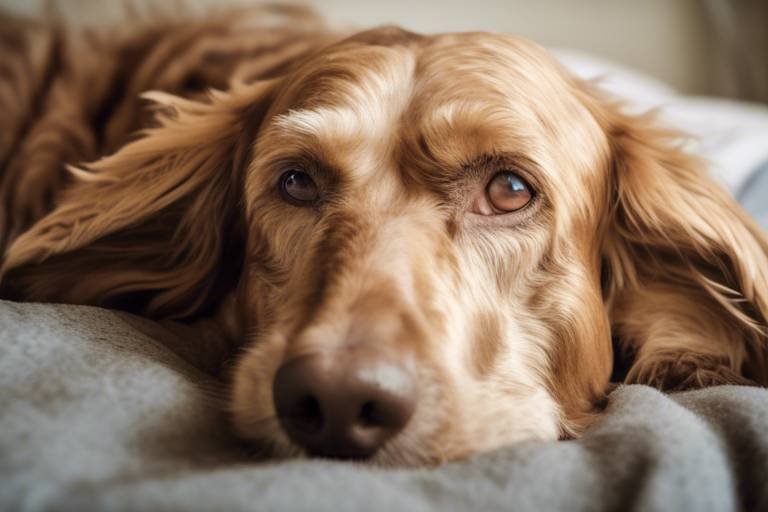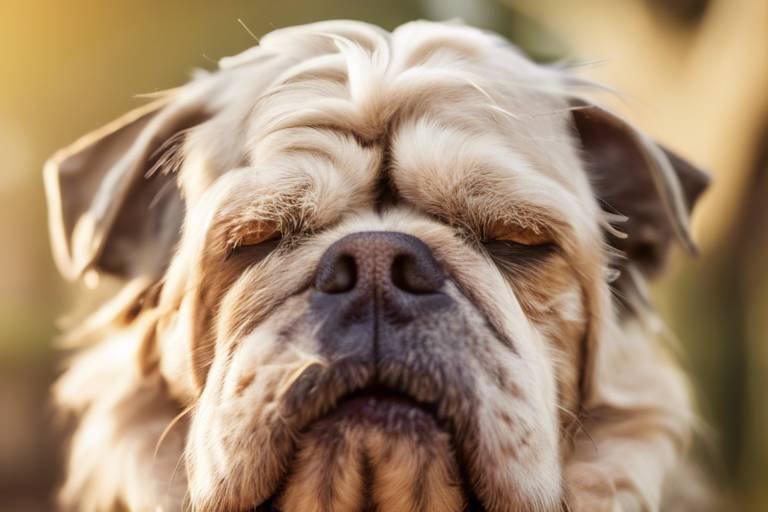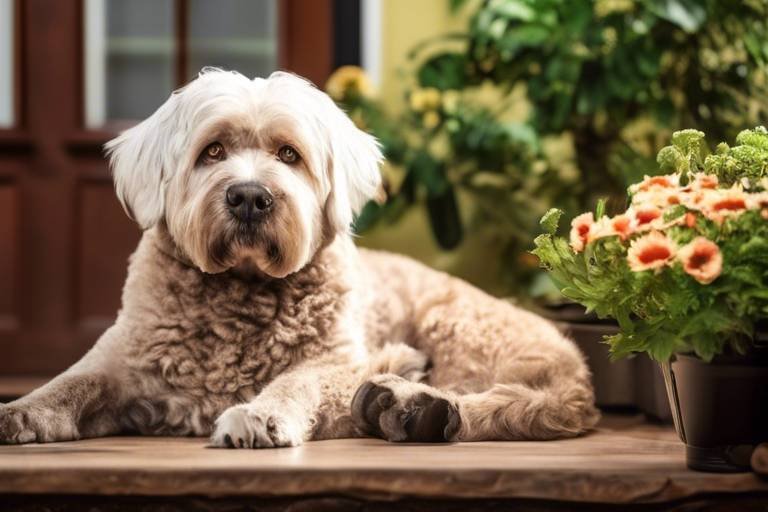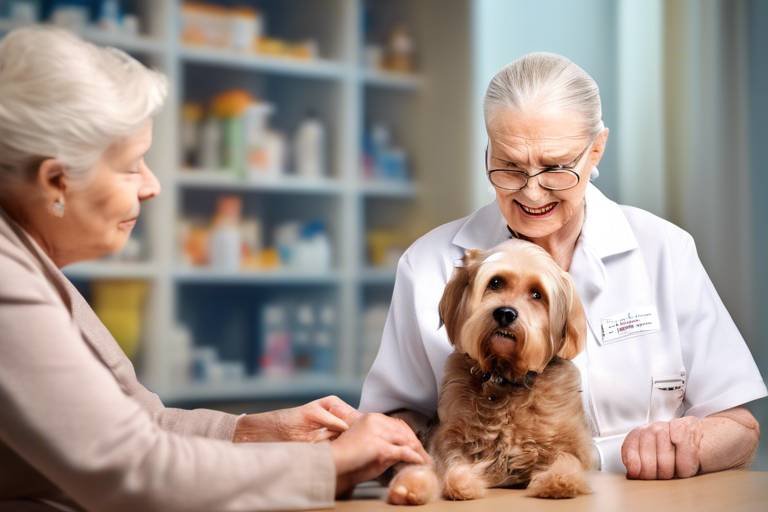Tips for Reducing Stress During Vet Visits
Taking your furry friend to the vet can feel like preparing for a trip to the dentist—nobody really wants to go, but it’s necessary for their health. If you’ve ever seen your pet’s ears droop or felt their body tense up at the mere mention of a vet visit, you know that stress can affect both you and your beloved animal. The good news? There are practical strategies to help ease this anxiety and make the experience more pleasant for everyone involved.
First things first, understanding your pet’s anxiety is crucial. Like humans, pets can exhibit a range of behaviors that signal they’re feeling stressed. You might notice your dog whining, pacing, or trying to hide, while cats may become more withdrawn or vocal. Recognizing these signs can help you address their needs effectively. After all, a little compassion goes a long way!
Now, let’s talk about preparation. Preparing for the visit can significantly reduce stress levels. Think of it as packing for a vacation; the better you prepare, the smoother the journey. This includes not just getting your pet ready, but also gearing yourself up mentally for the appointment. Make sure you have all necessary documents, like vaccination records, and write down any questions you might have for the vet. This way, you won’t feel rushed or flustered when you arrive.
When it comes to scheduling the appointment, timing is everything. Choosing the right time can make a world of difference. For instance, consider the following factors:
- Quiet Hours: Many veterinary clinics offer specific times for anxious pets. Scheduling during these hours can create a calmer environment for your pet.
- Shorter Wait Times: Try to book your appointment during times when the clinic is less busy. Early mornings or late afternoons are often ideal.
But wait! There’s more to it than just the timing. Familiarizing your pet with the clinic before the actual visit can significantly lessen their anxiety. A pre-visit trip can help your pet acclimate to the environment, making it feel less foreign when the appointment day arrives. Just like how we feel more comfortable in familiar surroundings, pets thrive in environments they recognize.
Once you're at the clinic, employing calming techniques can also work wonders. From calming sprays infused with soothing scents to playing soft music in the waiting room, there are various methods to help ease anxiety. Consider bringing along your pet’s favorite treats to create a positive association with the vet’s office. After all, who doesn’t love a little snack?
Additionally, exploring natural remedies can provide extra support for anxious pets. Options like pheromone diffusers or herbal supplements may help calm your furry friend before the visit. However, always consult your vet before trying something new to ensure it’s safe for your pet.
Finally, using positive reinforcement techniques can encourage calm behavior during the visit. Rewarding your pet for staying calm can create a more relaxed atmosphere, making it easier for both of you. Think of it as a little motivation; just like we enjoy a pat on the back for a job well done, pets appreciate a little praise and a tasty treat!
After the vet visit, it’s essential to help your pet recover from the experience. Just like us, pets need a little TLC after a stressful day. Spend some quality time together, offer them their favorite toys, or simply cuddle up on the couch. This post-visit care can help reinforce the idea that the vet visit is a part of their routine—and not something to be feared.
Q: How can I tell if my pet is anxious about going to the vet?
A: Look for signs like whining, hiding, excessive panting, or attempts to escape. These behaviors often indicate that your pet is feeling stressed.
Q: What should I do if my pet becomes aggressive during a vet visit?
A: It’s important to communicate with your vet about your pet's behavior. They may suggest calming techniques or even medication to help manage anxiety during visits.
Q: Are there any specific products that can help calm my pet?
A: Yes! Products like calming collars, sprays, and pheromone diffusers can help reduce anxiety. Always consult your vet for recommendations tailored to your pet’s needs.

Understanding Pet Anxiety
Recognizing pet anxiety is the first step in ensuring a smoother experience during veterinary visits. Just like humans, our furry friends can experience stress and anxiety, especially in unfamiliar environments. When you walk into a veterinary clinic, it can be a whirlwind of smells, sounds, and sights that may overwhelm your pet. It's essential to be aware of the signs that indicate your pet is feeling anxious.
Common behaviors that signal stress in pets include:
- Excessive barking or whining: This vocalization can be a cry for help or a sign of discomfort.
- Hiding or cowering: When pets retreat to corners or try to hide, it often means they are feeling scared.
- Pacing: Restlessness can indicate anxiety, as your pet may be trying to cope with their nervous energy.
- Excessive grooming: Some pets may lick or chew themselves as a way to self-soothe when stressed.
- Loss of appetite: If your pet refuses to eat before or during the visit, it could be a sign of anxiety.
Understanding these signs is crucial because they can help you identify when your pet is feeling overwhelmed. For instance, if your dog starts pacing or whining as soon as you enter the clinic, it’s a clear indication that they are not comfortable. In such cases, taking a moment to reassure them can make a world of difference.
Moreover, different pets react to anxiety in various ways. Some may become aggressive, while others might simply shut down. It's essential to know your pet's personality and usual behavior patterns, as this knowledge can guide you in recognizing when their anxiety levels are rising. A calm and observant owner can often intervene before the situation escalates, making the vet visit less stressful for both of you.
In summary, being aware of the signs of anxiety in pets helps prepare you to address their needs effectively. By understanding what makes your pet anxious, you can take proactive steps to alleviate their stress and ensure that your trip to the vet is as pleasant as possible.

Preparing for the Visit
When it comes to preparing for a vet visit, a little foresight can go a long way in reducing stress for both you and your furry friend. Think of it as setting the stage for a performance where your pet is the star. The more comfortable they feel, the better the show will be! Start by gathering all necessary documents and information about your pet's health history. This includes vaccination records, any medications they are currently taking, and a list of any symptoms or behaviors that concern you. Having this information handy not only speeds up the process but also allows the vet to focus on what matters most—your pet's well-being.
Next, consider the environment. Is your pet typically anxious in new places? If so, it might be beneficial to take a few preparatory steps to ease their nerves. For instance, you could bring along their favorite blanket or toy. Familiar scents can be incredibly soothing for pets, acting like a security blanket in a new setting. Moreover, try to create a calm atmosphere in the car on the way to the clinic. Play soft music or keep the volume low; this can help keep both you and your pet relaxed. Remember, your energy influences your pet's mood, so if you’re calm, they’re more likely to be calm too!
Another essential aspect of preparation is timing. You wouldn’t want to rush into an appointment, right? Choose a time when you can be relaxed and not rushed. This means avoiding peak hours when the clinic is likely to be bustling with activity. Ideally, aim for early morning or late afternoon appointments. These slots often have shorter wait times and can make the experience less overwhelming. Keep in mind that a well-timed visit can significantly reduce stress levels for both you and your pet.
When selecting the perfect time for your appointment, consider your pet's natural rhythms. Are they usually more relaxed in the morning or the afternoon? Aligning the vet visit with their peak calmness can make a significant difference. Additionally, many veterinary clinics offer special hours for anxious pets, which can be a game-changer. These quiet hours allow for a more peaceful environment, helping your pet feel more at ease.
Scheduling your appointment during quiet hours can truly enhance your pet's comfort. These designated times are often less busy, allowing for a more tranquil experience. Imagine walking into a calm oasis instead of a bustling marketplace. Your pet will appreciate the low-stress atmosphere, making them more receptive to the visit. It’s a win-win situation!
Understanding the clinic's schedule can also help you choose appointment slots that typically have shorter wait times. For instance, if you notice that the clinic tends to be less crowded on certain days or times, make a note of it! Less waiting means less anxiety for your pet. Plus, it allows you to spend more quality time with them afterwards, perhaps enjoying a little treat together as a reward for their bravery!
In conclusion, preparing for a vet visit is all about creating a positive experience. By gathering necessary information, choosing the right time, and creating a calming environment, you can significantly reduce stress levels. Remember, every little bit helps, and the more prepared you are, the smoother the appointment will go. Your pet deserves the best, and with a little planning, you can ensure they get it!
- How can I tell if my pet is anxious about the vet visit? Look for signs such as hiding, excessive barking or meowing, panting, or pacing.
- What should I bring to the vet appointment? Bring your pet's medical records, a favorite toy or blanket, and any medications they are taking.
- Are there specific times when I should schedule my vet appointment? Yes, early mornings or late afternoons are often quieter and less stressful for pets.
- Can calming products really help my pet? Yes, products like calming sprays, music, and treats can help ease anxiety.
Choosing the Right Time
When it comes to vet visits, timing can be everything. Imagine this: you’re sitting in a waiting room filled with barking dogs and anxious cats, and your pet starts to feel the tension in the air. Not exactly the calm experience you want for your furry friend, right? That's why selecting the optimal time for your appointment can significantly impact the stress levels for both you and your pet. Here are a few key factors to consider:
First off, think about your pet's routine. Pets thrive on consistency, and scheduling your visit during a time when they are usually calm can help. For example, if your pet is typically more relaxed in the morning after a good night's sleep, aim for a morning appointment. This way, your pet is less likely to be agitated and more likely to handle the visit like a champ.
Another important aspect is the day of the week. Many veterinary clinics experience peak traffic on Mondays and Saturdays, as pet owners rush in after the weekend. If possible, try to book your appointment on a Tuesday or Wednesday. These mid-week slots tend to be less crowded, which means shorter wait times and a more peaceful environment for your pet.
And let’s not forget about quiet hours. Many veterinary clinics offer specific times designated for anxious pets. These hours are typically scheduled when the clinic is less busy, allowing for a more relaxed atmosphere. During these times, your pet can be seen without the added stress of other animals in the waiting room. It's like having a VIP pass for your furry friend!
To help you visualize the best times to visit, here’s a simple table that outlines the ideal days and times for your vet appointments:
| Day | Best Time | Notes |
|---|---|---|
| Monday | Afternoon | High traffic, try to avoid |
| Tuesday | Morning | Less crowded |
| Wednesday | Mid-morning | Ideal for anxious pets |
| Thursday | Late morning | Good time for appointments |
| Friday | Early afternoon | Less busy than earlier in the week |
| Saturday | Afternoon | Very busy, avoid if possible |
| Sunday | N/A | Most clinics are closed |
By taking the time to choose the right appointment slot, you can create a more comfortable experience for your pet. Remember, a little planning goes a long way in reducing stress. So, keep these tips in mind, and your next vet visit might just be a walk in the park!
Quiet Hours
When it comes to reducing anxiety for our furry friends during vet visits, can be a game changer. Many veterinary clinics recognize that some pets experience heightened stress levels in bustling environments filled with other animals and unfamiliar sounds. By scheduling an appointment during these specially designated hours, you can create a more calm and serene atmosphere for your pet.
Imagine walking into a clinic where the hustle and bustle of barking dogs and meowing cats is replaced with a peaceful ambiance. This is exactly what quiet hours aim to provide. During these times, the clinic is less crowded, allowing for a more personalized experience. Your pet can take in their surroundings without feeling overwhelmed, which can lead to a more positive visit overall.
Here are a few benefits of scheduling your vet visit during quiet hours:
- Less Noise: With fewer animals around, your pet is less likely to be startled by sudden noises, making them feel more secure.
- More Attention: Vet staff can dedicate more time to each pet, ensuring that all concerns are addressed without the pressure of a busy waiting room.
- Faster Check-In: With fewer pets to process, you can expect a quicker check-in and examination, reducing wait times significantly.
To find out if your local vet offers quiet hours, simply give them a call or check their website. It’s a small step that can make a huge difference in your pet's experience. After all, who wouldn’t want to ensure their beloved companion feels as comfortable and stress-free as possible during a visit to the vet?
Shorter Wait Times
When it comes to reducing stress for both you and your furry friend, can make a world of difference. Imagine walking into a bustling veterinary clinic, only to find yourself stuck in a crowded waiting room filled with barking dogs and anxious cats. It’s not just uncomfortable for you; your pet can pick up on that energy, amplifying their anxiety. Therefore, choosing the right appointment slots can significantly enhance the overall experience.
To maximize your chances of a shorter wait time, consider scheduling your visit during off-peak hours. Many clinics experience a rush during the late afternoons or weekends, so aiming for mid-morning or early afternoon appointments can often lead to a more peaceful environment. Moreover, some veterinary practices may offer specific time slots dedicated to pets that are particularly anxious, which can further minimize the hustle and bustle.
Here are some tips to keep in mind when selecting your appointment time:
- Ask about peak hours: Don’t hesitate to ask the clinic about their busiest times. This information can help you plan your visit accordingly.
- Consider your pet’s routine: If your pet is usually more relaxed in the morning, try to schedule your visit during that time.
- Be flexible: If you can, remain open to rescheduling your appointment to a less busy time if the clinic suggests it.
Additionally, some veterinary clinics provide an online booking system that allows you to see available slots in real-time. This can be a game-changer, as it allows you to choose the most convenient and least crowded times without having to make a phone call. It’s a small step that can lead to a more enjoyable experience for both you and your pet.
In summary, by being proactive and strategic about when you schedule your vet visits, you can significantly reduce the time spent waiting and create a calmer atmosphere for your pet. Remember, a little planning goes a long way in making your veterinary experience as stress-free as possible!
Familiarizing Your Pet with the Clinic
When it comes to reducing stress during vet visits, one of the most effective strategies is to familiarize your pet with the clinic beforehand. Just like humans, pets can feel anxious in unfamiliar environments. So, why not take a little time to help them feel at ease? A pre-visit trip can make a world of difference, turning that intimidating vet clinic into a more familiar space.
Start by taking your pet on a casual visit to the clinic. This doesn’t have to be a formal appointment; instead, you can simply walk in, say hello to the staff, and allow your pet to explore the waiting area. During this visit, let your pet sniff around and take in the sights and sounds of the clinic. This exploration can help them associate the space with positive experiences rather than just the anxiety of being examined.
While you're there, consider engaging with the veterinary staff. A friendly chat can help your pet see the professionals as allies rather than threats. You might even ask the staff if they can give your pet a treat. This small gesture can create a positive association with the clinic, making your furry friend more comfortable during future visits.
Another great way to familiarize your pet is by bringing along their favorite toy or blanket. Having a piece of home with them can provide a sense of security. You can also practice some basic commands or tricks in the waiting area, which can help distract them from the new environment and reinforce their bond with you.
Don't forget to observe your pet's reactions during this visit. If they seem particularly anxious or fearful, it might be worthwhile to spend a little extra time there, allowing them to adjust at their own pace. Remember, the goal is to create a calm and relaxed atmosphere, so be patient and encouraging.
In summary, familiarizing your pet with the clinic can significantly reduce stress during actual vet visits. By taking the time to visit beforehand, engaging with staff, and bringing comforting items, you’re setting the stage for a more positive experience. After all, a little preparation goes a long way in ensuring that both you and your pet can walk into that clinic with confidence!
- How can I tell if my pet is anxious about going to the vet? Look for signs such as hiding, excessive barking or meowing, trembling, or trying to escape. These behaviors often indicate that your pet is feeling stressed.
- What should I do if my pet refuses to enter the clinic? If your pet is reluctant to enter, try using treats or their favorite toy to encourage them. It might also help to take a few steps back and allow them to observe the environment from a distance before approaching.
- Are there specific times that are better for scheduling vet visits? Yes! Scheduling during quiet hours or early in the day can help you avoid crowds and minimize stress for your pet.
- Can I bring my pet’s favorite toy to the vet? Absolutely! Bringing a familiar item can provide comfort and help ease anxiety during the visit.

Using Calming Techniques
When it comes to making your pet's vet visit less stressful, employing calming techniques can be a game changer. Just like how we sometimes need a little extra help to calm our nerves—think of a cozy blanket or a favorite song—your furry friend can benefit from similar soothing strategies. Let's dive into some effective methods to help ease your pet's anxiety before and during the appointment.
One of the most popular methods is using calming sprays or diffusers that contain natural ingredients like pheromones. These sprays mimic the calming scents that animals produce when they feel safe and relaxed. Spraying a little on your pet’s bedding or in their carrier can create a more comforting environment. Additionally, many pet owners have found success with music therapy. Playing soft, soothing music can help drown out the unfamiliar sounds of the clinic, making your pet feel more at ease. There are even playlists specifically designed for calming pets!
Another effective technique is the use of treats as a form of positive reinforcement. Before heading to the vet, reward your pet with some of their favorite treats. This not only helps create a positive association with the visit but also distracts them from the anxiety of being in an unfamiliar place. You can even bring along some treats to offer during the appointment as a reward for calm behavior. This approach not only helps your pet feel more relaxed but also strengthens your bond as they associate the vet visit with positive experiences.
If you’re looking to explore more natural remedies, there are various options available. Herbal supplements like chamomile or valerian root have been known to help soothe anxious pets. However, it’s crucial to consult with your veterinarian before trying any new supplements to ensure they are safe and appropriate for your pet's specific needs. Always remember, what works for one pet may not work for another, so it's essential to find the right combination of techniques that suit your furry friend best.
In summary, using calming techniques can significantly alleviate the stress of a vet visit for both you and your pet. By incorporating calming sprays, soothing music, positive reinforcement through treats, and exploring natural remedies, you can create a more peaceful environment. The key is to experiment with different methods and observe how your pet responds, ensuring that each visit is a little less daunting and a lot more enjoyable.
- What are calming sprays, and how do they work? Calming sprays contain synthetic pheromones that mimic the natural scents pets produce when they feel safe. They help create a calming environment for your pet.
- Can I use music to calm my pet? Yes, playing soft music can help reduce anxiety. There are even playlists specifically designed for pets!
- Are natural supplements safe for my pet? While many natural remedies can be effective, it's important to consult with your veterinarian before introducing any new supplements to ensure they are safe for your pet.
- How can I use treats to calm my pet during a vet visit? Bring your pet’s favorite treats to reward them for calm behavior, creating a positive association with the vet visit.
Natural Remedies
When it comes to easing your pet's anxiety during those nerve-wracking vet visits, natural remedies can be a game changer. Imagine walking into the clinic with your furry friend, and instead of trembling and hiding, they’re calm and collected. Sounds dreamy, right? Well, with the right natural solutions, this can be your reality. One of the most popular options is pheromone diffusers. These little gadgets release calming scents that mimic the natural pheromones your pet produces, creating a sense of familiarity and security. It’s like giving your pet a warm hug before you even step foot in the clinic!
Another effective approach is using herbal supplements. These come in various forms, from treats to liquid drops, and can help soothe your pet's nerves. Ingredients like chamomile, valerian root, and passionflower are known for their calming properties. However, it’s essential to consult your vet before introducing any new supplements to your pet's routine. You wouldn’t want to mix things that don’t play well together, right?
Additionally, consider calming music. Yes, you read that right! Just like how some people unwind with their favorite tunes, pets can also benefit from soothing sounds. There are even playlists specifically designed for pets that can help them relax. Play this music during your car ride to the vet or while waiting in the lobby. It can create a serene environment that eases their anxiety.
Lastly, never underestimate the power of exercise. A good play session before your vet visit can help burn off excess energy, making your pet more relaxed when it’s time to go. Think of it as a pre-game warm-up; it sets the tone for what’s to come! By incorporating these natural remedies into your routine, you can help transform that stressful vet visit into a more pleasant experience for both you and your beloved pet.
- What are pheromone diffusers, and how do they work? Pheromone diffusers release synthetic versions of natural pheromones that can help calm pets by providing a sense of comfort and security.
- Are herbal supplements safe for my pet? While many herbal supplements are safe, it’s crucial to consult your veterinarian to ensure they won’t interfere with any medications or conditions.
- Can music really help my pet relax? Absolutely! Calming music can help reduce anxiety in pets, creating a soothing atmosphere during stressful situations.
- How much exercise should my pet get before a vet visit? A good 20-30 minute play session can help release pent-up energy, making your pet more relaxed for their appointment.
Positive Reinforcement
When it comes to reducing stress during vet visits, can be a game changer for both you and your furry friend. Imagine walking into the vet's office and instead of feeling the weight of anxiety, you feel a sense of calm and control. How do you achieve that? By rewarding your pet for calm behavior, you create a more relaxed atmosphere that can significantly ease their nerves.
Positive reinforcement involves rewarding your pet for desirable behaviors, which encourages them to repeat those behaviors in the future. For instance, if your dog remains calm while waiting for their appointment, a simple treat or praise can reinforce that behavior. This not only helps your pet associate the vet visit with positive experiences but also strengthens your bond with them.
Here are some effective strategies to implement positive reinforcement during vet visits:
- Bring Their Favorite Treats: Pack a few of your pet's favorite treats to offer during the visit. This can help distract them from the unfamiliar environment and make them feel more at home.
- Use Praise Generously: Verbal praise can work wonders. Use a cheerful tone and lots of affection when your pet exhibits calm behavior, reinforcing the idea that being relaxed at the vet is a good thing.
- Practice at Home: Before the visit, practice handling your pet in ways that mimic the vet experience. For example, gently touching their paws or looking in their ears can help them get used to being handled, making the actual visit less stressful.
Furthermore, consider using a calm voice and a relaxed demeanor yourself. Pets are incredibly perceptive and can pick up on their owner's emotions. If you're anxious, your pet may mirror that anxiety. By staying calm and collected, you can help your pet feel more secure. Remember, your energy speaks volumes!
In addition to treats and praise, you can also incorporate training exercises that promote calmness. For instance, teaching your pet to sit and stay can be beneficial during the vet visit. This not only gives them a task to focus on but also helps them feel more in control of the situation. The more they practice, the more confident they will become.
Lastly, don't forget to celebrate small victories. If your pet makes it through the visit without too much stress, shower them with affection and maybe even a fun outing afterward. This creates a positive association with vet visits, transforming them from a dreaded chore into an opportunity for adventure and bonding. In the long run, this approach can lead to a more relaxed pet and a smoother experience for everyone involved!
Q: What is positive reinforcement?
A: Positive reinforcement is a training method that involves rewarding desired behaviors to encourage their repetition. In the context of vet visits, it helps pets associate the experience with positive outcomes.
Q: How can I prepare my pet for a vet visit?
A: Preparing your pet can include familiarizing them with the vet's office, practicing handling at home, and using positive reinforcement techniques to create a calm atmosphere.
Q: What types of rewards can I use for positive reinforcement?
A: Rewards can include treats, praise, petting, or even playtime. Choose what your pet responds to best to reinforce calm behavior.
Q: Can positive reinforcement help with other stressful situations?
A: Absolutely! Positive reinforcement can be applied to various situations beyond vet visits, including grooming, traveling, or any scenario that may induce anxiety in your pet.

Post-Visit Care
After a veterinary visit, it’s essential to provide your pet with the care and comfort they need to recover from the experience. Just like us, pets can feel overwhelmed and stressed after being in an unfamiliar environment, surrounded by strange sounds and smells. So, how can you help them bounce back? Here are some practical strategies to ensure your furry friend feels safe and loved after their appointment.
First and foremost, create a calm atmosphere at home. This means minimizing noise and distractions, allowing your pet to settle down in a familiar and comfortable space. You might want to set up a cozy spot with their favorite blanket or bed, where they can retreat and relax. Remember, just like a child after a long day at school, your pet may need a little downtime to decompress.
Additionally, consider providing some gentle playtime or a soothing massage. Engaging in light activity can help release pent-up energy and reduce stress. However, be mindful of their physical state—if your pet has had a procedure or is feeling particularly sensitive, opt for a gentle petting session instead. This not only helps them relax but also strengthens your bond.
Another important aspect of post-visit care is to pay attention to their eating habits. Some pets may lose their appetite after a vet visit due to anxiety. If this happens, don't panic. Offer them their favorite treats or a small amount of their usual food to entice them to eat. If they continue to refuse food for more than a day, it’s a good idea to consult your vet for advice.
Finally, keep an eye on their behavior. Look out for any changes that might indicate lingering stress or discomfort. Signs such as excessive hiding, vocalization, or changes in bathroom habits can be red flags. If you notice anything unusual, don’t hesitate to reach out to your veterinarian. They can provide guidance and support to ensure your pet's well-being.
In summary, the post-visit period is crucial for helping your pet recover from the stress of a vet appointment. By creating a calm environment, engaging in gentle activities, monitoring their eating habits, and being vigilant about their behavior, you can help your furry friend feel secure and loved.
- How long does it take for my pet to recover from a vet visit?
Recovery time can vary based on the individual pet and the nature of the visit. Generally, pets may need a few hours to a couple of days to fully recover from the stress of a vet visit. - What should I do if my pet shows signs of anxiety after the visit?
If your pet continues to show signs of anxiety, such as hiding or refusing to eat, consider reaching out to your veterinarian for advice. They may suggest calming products or techniques. - Can I use calming products at home?
Yes, there are various calming products available, such as pheromone diffusers and natural supplements. Always consult your vet before trying new products to ensure they are safe for your pet.
Frequently Asked Questions
- What are the signs of anxiety in pets during vet visits?
Pets can show various signs of anxiety when visiting the vet. Common behaviors include excessive barking, hiding, trembling, or even aggression. You might also notice them panting, drooling, or trying to escape. Being aware of these signs can help you address their needs effectively.
- How can I prepare my pet for a vet visit?
Preparation is key! Start by getting your pet used to their carrier or leash well in advance. Take short trips to the vet for socialization without an actual appointment. You can also bring their favorite blanket or toy to make them feel more comfortable during the visit.
- What are quiet hours at veterinary clinics?
Many veterinary clinics offer quiet hours specifically designed for anxious pets. During these times, the clinic is less busy, reducing the number of other animals and distractions. Scheduling your appointment during these hours can significantly enhance your pet's comfort and reduce stress.
- How can calming techniques help my pet?
Calming techniques can be incredibly beneficial for anxious pets. Methods such as using calming sprays, playing soothing music, or offering treats can help create a relaxed atmosphere during the visit. These techniques can ease your pet's anxiety and make the experience more pleasant.
- Are there natural remedies for pet anxiety?
Yes! There are several natural remedies available to help soothe anxious pets. Options like pheromone diffusers and herbal supplements can provide additional support. Always consult your veterinarian before trying new products to ensure they are safe for your pet.
- What is positive reinforcement, and how can it help?
Positive reinforcement involves rewarding your pet for calm behavior. This could be through treats, praise, or affection. By associating the vet visit with positive experiences, your pet will be more likely to remain calm and relaxed during future appointments.
- How can I help my pet after a vet visit?
After the vet visit, it's important to help your pet recover from the experience. Provide them with a quiet space to relax, offer their favorite treats, and shower them with affection. Engaging in a calming activity, like a gentle walk or cuddle time, can also help ease their stress.



















